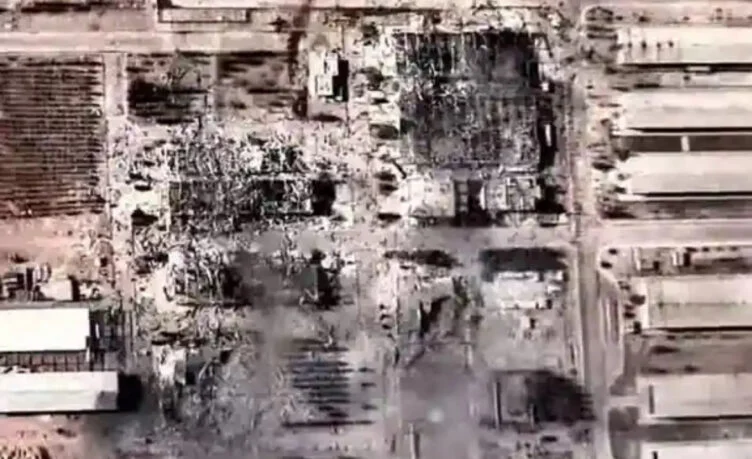THE “HOLY COWS” OF THE RESOURCE SECTOR OF THE ECONOMY
Sergey Smirnov
Currently, transnational companies significantly impact the global economy through their control of over 50% of global industrial production, more than 60% of international trade, and almost 90% of foreign direct investment (FDI). In particular, practically the whole of the trade in resources on the global markets is carried out under their authority. The corporations have not neglected Kazakhstan, and instead control a significant amount of the natural resources [of the country].
After gaining its independence, the republic was not the only among those within the post-Soviet space to introduce the practice of attracting FDI through handing large enterprises [to foreign investors] via entrusted management, with privatization following. As well, new industry with 100% foreign investment formed. However, the government also made intensive operations in the natural resource sectors the foundation for its economic politics. This is understandable. The republic is entering the number of top ten countries as regards explored reserves of many natural resources. Accordingly, one of the primary branches of industry in the republic is that of mining and metallurgy, having significant export potential. Production in this sphere, particularly ferrous and nonferrous metals, is ever in demand on the global markets. From 1998 to 2005, production volumes of metal-bearing ore in the republic grew by 3.5 times. In the first eight months of 2006, production of ferrous metals totaled KZT 180.2 bln, and that of nonferrous metals came to KZT 417.6 bln, which, respectively, are higher than the analogous period of the previous year by 7.2% and 4.9%. Unsurprising is that well-known international corporations, such as Glencore International AG (Kazzinc OJSC), Samsung (Kazakhmys JSC), Mittal Steel (Mittal Steel Timertau JSC – MST), and others have become firmly established in Kazakhstan (quickly learning the local, unofficial rules of business development). In the 90s, plans were made for the creation of state-owned corporations for production of base metals, including a Ministry of Nonferrous Metallurgy, but… the holdings in this area were instead divided into types of base metals, and distributed among various masters: someone got copper, somebody zinc, and another iron. In addition, the government, judging by its reaction to legal infringements by transnationals, has thus far experienced a form of religious piety towards such corporations (like the relationship between Hindis and sacred cows).
Steel Resources
Kazakhstan possesses approximately 17% of the manganous ore reserves of the CIS (nearly 600 mln tons), which allows the republic to take fourth place worldwide (after South Africa, Ukraine, and Gabon), and seventh by production. Annual production of manganous ore averages 500,000 tons. Kazakhstani manganous ore is in high demand, as it contains a higher content of manganese (up to 25%), and a lower content of phosphor and sulfur, significantly lowering the processing cost. The main customer for Kazakhstan’s manganous ore is Russia (despite its having 3% of global reserves). Kazakhstan is estimated to have the third largest reserves of chromite ore worldwide, which supports the operations of the ferroalloy plants of the republic. The country’s explored reserves of chromite are only exceeded by those of South Africa, though Kazakhstan’s are by quality the best in the world. The region with the largest production base is the Aktobe region, as here 95% of the chromite ore in the CIS is produced. [The city of] Chromtau accounts for 65 mln tons of production via strip-mining, having 260 mln tons of proven reserves among 700 mln tons of explored reserves. As the concentration of chromium in the ore averages 48-50%, it is directed only to ferroalloy plants. Overall, almost 4 mln tons of chromite is produced in Kazakhstan. Looking to reserves of iron ore (estimated at 16.6 bln tons, totaling 8% of global reserves) Kazakhstan ranks in eighth place worldwide. Additionally, out of 8.8 bln tons of explored and operating reserves, 73% are easily exploited. Nearly 90% of reserves are concentrated in Turgay oblast in northern Kazakhstan, while the remainder OK located in the central portion of the republic. By production levels of iron ore, Kazakhstan ranks tenth worldwide, after China, Brazil, Australia, Russia, the U.S., India and Ukraine (which collectively account for over 80% of global output). Among the CIS countries, the republic holds the third place, behind Russia and Ukraine. Kazakhstan’s ferrous metallurgy is more oriented towards export than Russia’s. The portion of metal production going abroad is 85% (and by some estimates may be up to 95%), whereas in Russia this number is only 55%. This is understandable. Domestic needs for metal in the republic remain quite low, being utilized mainly in the construction industry, and to a lesser degree in machinery production. Ferrous metallurgy is distributed primarily between four oblasts of the republic (Kostanai, Karaganda, Aktobe and Pavlodar), in which are deposits of iron ore and availability of hydroelectric energy. Production of ferrous metallurgy in Kazakhstan is dominated by two transnationals: Mittal Steel and KazChrome. The largest share of production of steel (99.5%) and cast iron (100%) occurs in Karaganda oblast (MST), while that of ferroalloys (76.2%) is focused in Pavlodar oblast (Aksu Ferroalloy Plant).
Mittal’s Ferrous Metal
Ferrous metallurgy accounts for nearly 13% of the nation’s industrial production volume. Actually, MST (formerly Ispat-Karmet) acts as a virtual monopolist today, and is part of the international steel producer, Mittal Steel, which operates in 15 countries on four continents. The company’s annual production capacity is 5.5 mln tons of liquid steel and up to 3.9 mln tons of rolled steel. By 2008 the metallurgical complex will increase its steel production by 65%. The enterprise can perform the full metallurgical cycle, and specializes in production of different types of rolled steel, such as sheets and bars, among others. The primary importers of the production include China, Russia, Iran, and EU nations. The company’s management does not conceal that the Kazakhstani complex is “one of the most profitable worldwide.” However, the reason for this is in the absence of modern technology (the core equipment was set up during Soviet times), while still adopting western management practices, which were introduced by the foreign investors. In justifying the necessity to lower the production costs by means of creating a vertically integrated process, the management of Mittal Steel managed to acquire 15 of the then existing 26 state-owned mines of the Karaganda coal basin, as well as electrical stations and railway dead ways, within six months of acquiring the complex. All of these economical acquisitions came debt-free to Mittal, the liabilities of which remained on the state’s balance sheet. In the opinion of specialists, the primary factor in the miracle created by Mittal has been low wages: salaries in terms of contribution to the prime cost of production amount to only 18%. Among all of the [production] subsidiaries of Mittal Steel, among ten countries, the lowest wages are paid to our workers. The foreign investor saves literally on everything, beginning with the equipment and ending with sick leave. Aside from this, the number of workers is consistently reduced, and the load on the remainder permanently increases. However, this is not everything, as the labor collective holds a portion of the ordinary shares of the enterprise, but the annual dividend [per share] received by the workers is never in excess of KZT 150. The dividends paid out to Lakshmi Mittal, the primary owner of Mittal Steel, over a six-month period amounted to KZT 3.5 bln, just from selling Karaganda coal. However, according to workers from the company, they have been hearing one and the same song over the course of eleven years: there is a crisis in production, a low level of sales, and no money available. Meanwhile, metal prices on the world market have been steadily growing. The conflicts, as it is understood, between the management and workers of MST have acquired a chronic character. Claims have been lodged against the company by the tax authorities to the amount of KZT 16.6 bln in money owed to the state coffers. This fact was voiced during the eighth gathering of the Council of Foreign Investors (CFI), which took place in Almaty during early June. According to Sarybai Kalmurzaev, head of the Agency for the Fight against Economic Corruption Crimes, “The taxpayer applied current legislation on tax obligations in accordance with his own interests, instead of that [valid] at the time of signing the [production sharing] agreement [with the state]. As a result of this tax





Все комментарии проходят предварительную модерацию редакцией и появляются не сразу.